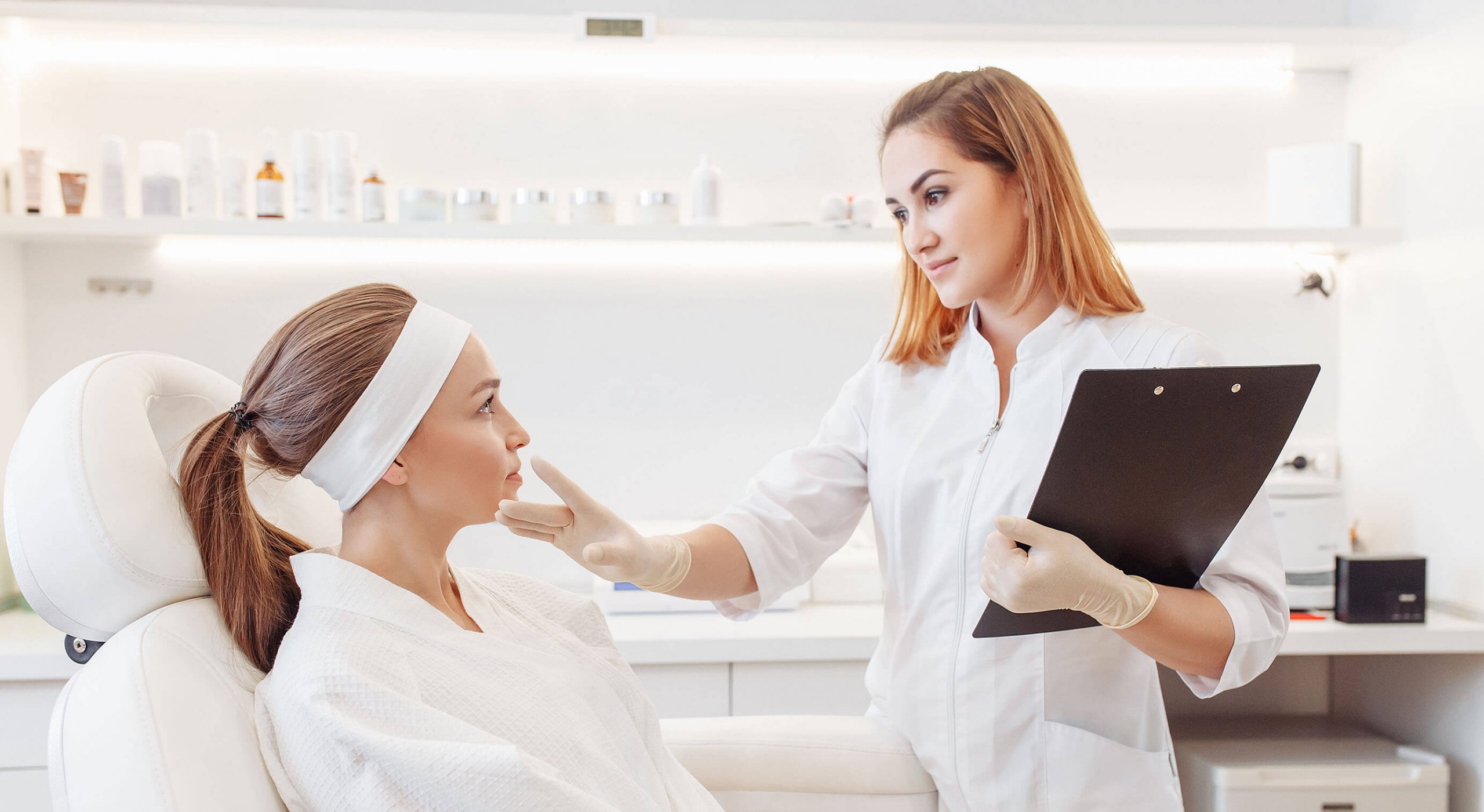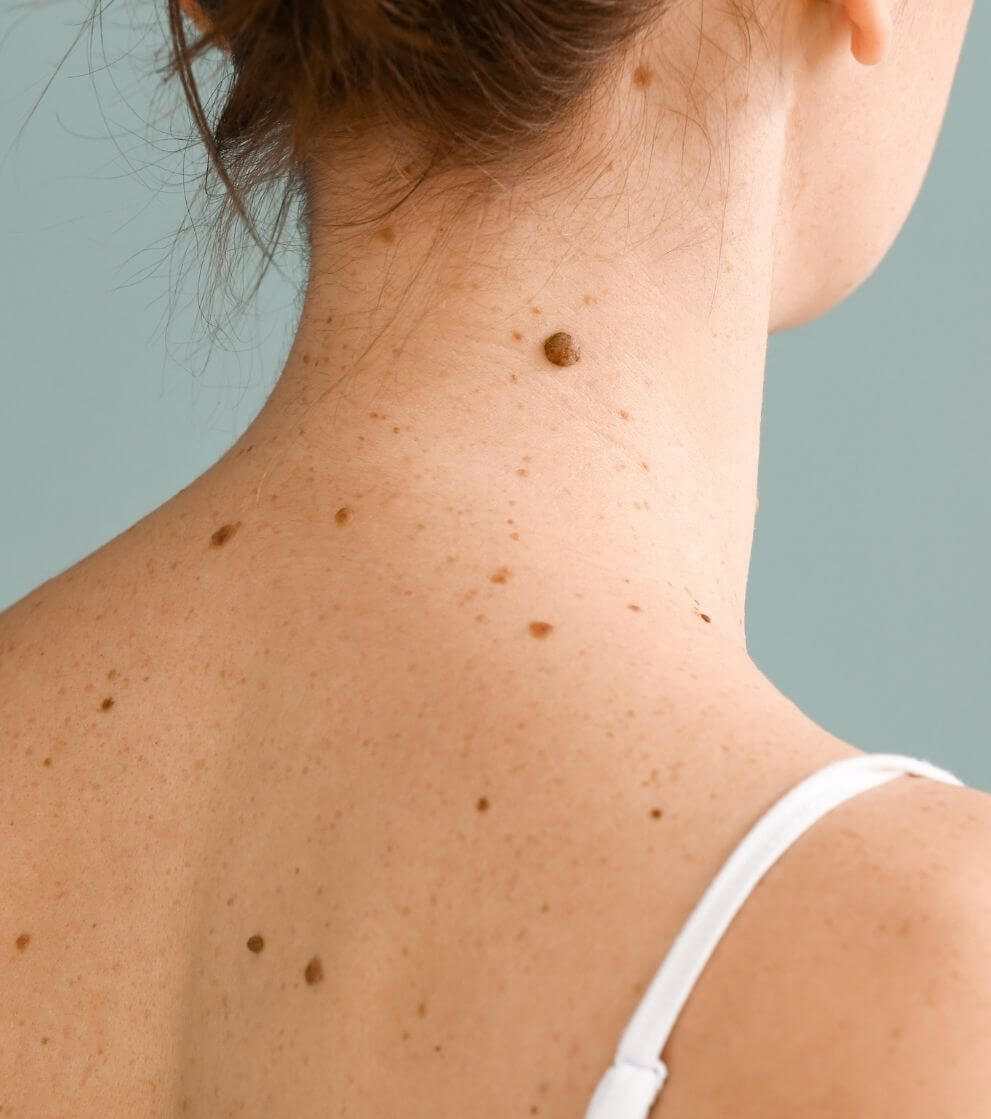SQUAMOUS CELL CARCINOMA TREATMENTS IN NORTHWOOD & HARLEY STREET
Squamous cell carcinoma is a type of skin cancer. There are two main types of skin cancer: melanoma and non-melanoma skin cancer. Squamous Cell Carcinoma (SCC) is a non-melanoma skin cancer and the second most common type of skin cancer in the UK.
Book ConsultationWhat causes squamous cell carcinoma?
The most common cause is too much exposure to ultraviolet (UV) light from the sun or from sunbeds. This causes certain cells (keratinocytes) in one the outer layer of the skin (the epidermis) to grow out of control into a tumour.
SCC can occur on any part of your body, but is most common on areas that are exposed to the sun, i.e. your head and neck (including the lips and ears) and the backs of your hands. SCC can also develop where the skin has been damaged by X-rays, ulcers, burns and on persistent chronic wounds and old scars. SCC is not contagious.

Your Consultation
At the Cedars Dermatology Clinic in Northwood & Harley Street, we draw deeply from the consultation process. Our expert clinicians will listen carefully to understand your skin concerns and aesthetic and medical goals.
- Your medical history is taken into account
- We thoroughly assess your skin
- We listen well to understand your concerns and goals
- We draw up a personalised treatment plan
FAQS about Squamous Cell Carcinoma
SCC mainly affects the following groups:
- Older people – even those who tend to avoid the sun
- Builders, farmers, surfers, sailors and people who often are out in the sun, can develop a SCC when they are quite young.
- Those with a fair skin are more at risk of developing SCC than people with a darker skin.
- Keep babies and young children out of direct sunlight
- Anyone who has had a lot of ultraviolet (UV) light treatment for skin conditions such as psoriasis will also be at increased risk of getting an SCC.
- Those whose immune system has been suppressed by medication taken after an organ transplant, or by treatment for leukaemia or a lymphoma.
No, they are not; however, some of the things that increase the risk of getting one, such as fair skin, a tendency to burn rather than tan, and freckling, do run in families.
SCC can vary greatly in their appearance, but most SCC usually appears as a scaly or crusty area of skin or lump, with a red, inflamed base. SCC are often tender, but some small SCC are not painful.
If your doctor thinks that the mark on your skin needs further investigation, you will be referred to a skin specialist who will decide whether or not it is an SCC. To confirm the diagnosis, a small piece of the abnormal skin (a biopsy), or the whole area (an excision biopsy), will be cut out and examined under the microscope. You will be given a local anaesthetic beforehand to numb the skin.
Yes, SCC can be cured if they are detected early. If an SCC is left untreated for too long there is a small risk (2-10 %) that it may spread to other parts of the body, and this can be serious.
Surgery is the first choice of treatment and several different methods are available. To select the right one, your surgeon will take into account the size of the SCC, where it is, what type it is, and how long you have had it. The most common surgical technique is simply to cut the SCC away, along with some clear skin around it, using local anaesthetic to numb the skin. The skin can usually be closed with a few stitches, but sometimes a small skin graft is needed.
Other types of treatment include:
- Early small thin SCC:
- Curettage and cautery- first the SCC is scraped away (curettage) then the skin surface is sealed (cautery). This is a reasonable treatment for small SCC.
- Cryotherapy– freezing the SCC off, as you would a wart, usually with liquid nitrogen.
- Large, difficult, or spreading SCC:
- Advanced surgery, using the Mohs’ technique, which is undertaken only in specialist centres, and then only for difficult or recurring SCC. This involves the excision of the affected skin that is then examined under the microscope straight away to see if all the SCC has been removed. If any residual SCC is left at the edge of the excision further skin is excised from that area and examined under the microscope and this process is continued until all the SCC is removed. The site is then usually covered with a skin graft (should a skin graft be necessary skin camouflage can assist greatly in colour toning the skin graft to match your natural skin tone, making the skin graft less obvious)
- The removal of lymph nodes- this is unusual but may be needed if there are concerns that the SCC has spread.
- Radiotherapy – (treatment with X-rays) may be used if the SCC is large or in an awkward place. You may be offered this on its own or alongside surgery. Radiotherapy may also be used to relieve symptoms when SCC has spread to other parts of the body.
- Chemotherapy – (treatment with drugs) is only used when a SCC has spread to other parts of the body.
Treatment will be much easier if your SCC is detected early. SCC can vary in their appearance, but it is advisable that you should see your doctor if you have any marks on your skin which are:
- growing
- bleeding and never completely healing
- changing appearance in any way
You can also take some simple precautions to help prevent a SCC appearing:
Top sun safety tips:
- Protect your skin with clothing, and don’t forget to wear a hat that protects your face, neck and ears, and a pair of UV protective sunglasses.
- Spend time in the shade between 11am and 3pm when it’s sunny. Step out of the sun before your skin has a chance to redden or burn.
- When choosing a sunscreen look for a high protection SPF (SPF 30 or more) to protect against UVB, and the UVA circle logo and/or 4 or 5 UVA stars to protect against UVA. Apply plenty of sunscreen 15 to 30 minutes before going out in the sun, and reapply every two hours and straight after swimming and towel-drying.
- Keep babies and young children out of direct sunlight.
- The British Association of Dermatologists recommends that you tell your doctor about any changes to a mole or patch of skin. If your GP is concerned about your skin, make sure you see a Consultant Dermatologist – an expert in diagnosing skin cancer. Your doctor can refer you for free through the NHS.
- Sunscreens should not be used as an alternative to clothing and shade, rather they offer additional protection. No sunscreen will provide 100% protection.
- It may be worth taking Vitamin D supplement tablets (available from health food stores) as strictly avoiding sunlight can reduce Vitamin D levels.
Vitamin D advice
The evidence relating to the health effects of serum Vitamin D levels, sunlight exposure and Vitamin D intake remains inconclusive. Avoiding all sunlight exposure if you suffer from light sensitivity, or to reduce the risk of melanoma and other skin cancers, may be associated with Vitamin D deficiency.
Individuals avoiding all sun exposure should consider having their serum Vitamin D measured. If levels are reduced or deficient they may wish to consider taking supplementary vitamin D3, 10-25 micrograms per day, and increasing their intake of foods high in Vitamin D such as oily fish, eggs, meat, fortified margarines and cereals. Vitamin D3 supplements are widely available from health food shops.







